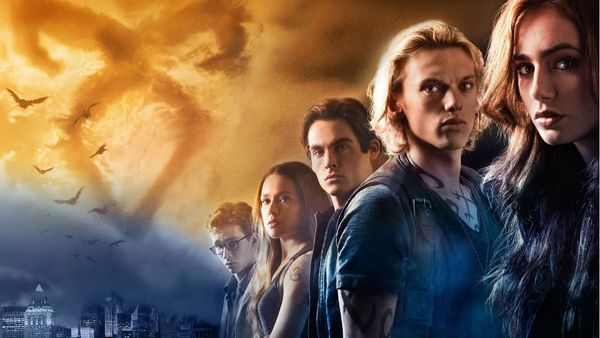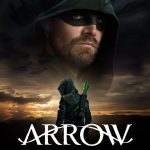The Mortal Instruments: City of Bones (2013)

The Mortal Instruments: City of Bones (2013), directed by Harald Zwart, is a fantasy adventure film based on the popular novel by Cassandra Clare. As the first installment in The Mortal Instruments series, the film introduces audiences to a world of shadowhunters, demons, and ancient magic. This essay delves into the film’s plot, character development, thematic elements, and its significance within the fantasy genre, exploring how it sets the stage for the series and resonates with its audience.

The narrative of City of Bones follows Clary Fray (played by Lily Collins), a seemingly ordinary teenager whose life is upended when she discovers that she is part of a hidden world of shadowhunters—humans with angelic blood who protect the world from demons. The story begins with Clary’s mundane life in New York City, but her world shifts dramatically after witnessing a murder committed by a mysterious group she later learns are shadowhunters.
Clary’s journey begins when her mother, Jocelyn Fray (played by Lena Headey), is kidnapped by the malevolent warlock Valentine Morgenstern (played by Jonathan Rhys Meyers). In her search for her mother, Clary encounters Jace Wayland (played by Jamie Campbell Bower), a shadowhunter who reveals her own hidden heritage and introduces her to the secretive world of the Nephilim. As Clary and Jace team up with other shadowhunters, they uncover a plot that could unleash a demonic apocalypse, leading them into a series of perilous encounters and revelations.
The film’s narrative structure combines elements of action, adventure, and romance, interwoven with themes of self-discovery and the battle between good and evil. The pacing alternates between moments of intense action and quieter, character-driven scenes, allowing for a balanced exploration of the film’s complex world and character relationships.

Clary Fray serves as the protagonist and emotional core of the film. Lily Collins’s portrayal captures Clary’s transition from an ordinary teenager to a courageous and determined heroine. Clary’s development is marked by her growing understanding of her heritage, her bravery in confronting danger, and her evolving relationships with those around her. Her character arc is central to the film’s exploration of identity, family, and personal growth.
Jace Wayland, portrayed by Jamie Campbell Bower, is another pivotal character. As a skilled shadowhunter with a troubled past, Jace provides both a romantic interest and a mentor figure for Clary. His character is initially portrayed with a mix of confidence and vulnerability, and his development throughout the film reveals deeper layers of his personality and his struggle with his own past. The chemistry between Jace and Clary adds a romantic subplot that complements the film’s main narrative.
The supporting cast includes a diverse array of characters who contribute to the film’s rich world-building. Simon Lewis (played by Robert Sheehan) serves as Clary’s best friend, who finds himself entangled in the shadowhunter world. His character provides comic relief and emotional support, highlighting the theme of friendship amidst adversity. Alec Lightwood (played by Kevin Zegers) and Isabelle Lightwood (played by Jemima West) add depth to the shadowhunter faction, showcasing different facets of the shadowhunter community.
City of Bones explores several prominent themes through its narrative and character interactions. One of the central themes is the journey of self-discovery and personal identity. Clary’s evolution from a normal teenager to a shadowhunter grappling with her own powers and heritage reflects the universal quest for understanding oneself and one’s place in the world.
Another significant theme is the battle between good and evil, depicted through the conflict between the shadowhunters and the demonic forces they fight. The film’s portrayal of this struggle serves as a metaphor for larger conflicts within the human experience, such as the fight against inner demons and the quest for justice.
The theme of family and its complexities is also explored, particularly through Clary’s relationship with her mother and the revelation of her true heritage. The film delves into the idea of chosen family versus biological family, emphasizing the importance of loyalty, sacrifice, and love in the face of adversity.

The film’s world-building is a crucial aspect of its storytelling, introducing audiences to a rich and intricate universe of shadowhunters, demons, and magical artifacts. The portrayal of the shadowhunter society, with its hidden runes, ancient traditions, and mystical objects, creates a compelling backdrop for the story. The film’s visual style, characterized by its dark and atmospheric settings, enhances the sense of danger and mystery that pervades the narrative.
The use of special effects and CGI is integral to bringing the supernatural elements of the story to life. The film’s depiction of magical battles, demon encounters, and enchanted objects contributes to its overall sense of wonder and excitement. The visual effects, while not universally praised, effectively convey the fantastical elements of the world and complement the film’s action sequences.

The Mortal Instruments: City of Bones received a mixed response from critics and audiences. While some praised the film’s ambitious world-building and engaging action sequences, others criticized it for its reliance on genre conventions and its pacing issues. Despite the mixed reviews, the film has garnered a dedicated fan base and remains an important entry in the fantasy genre.
The film’s adaptation of Cassandra Clare’s popular novel series introduced a new generation of fans to the world of shadowhunters and set the stage for subsequent adaptations and related media. Its impact on the genre is notable for its attempt to blend traditional fantasy elements with modern storytelling techniques, contributing to the ongoing popularity of fantasy and supernatural fiction.
The Mortal Instruments: City of Bones (2013) is a significant film in the fantasy genre, offering a blend of action, romance, and supernatural elements. Through its engaging narrative, character development, and thematic exploration, the film establishes a compelling world of shadowhunters and demonic forces. While its reception was mixed, its contribution to the genre and its role in introducing audiences to Cassandra Clare’s universe make it a noteworthy cinematic experience. The film’s exploration of self-discovery, family, and the battle between good and evil resonates with audiences and underscores its significance as a modern fantasy adventure.










